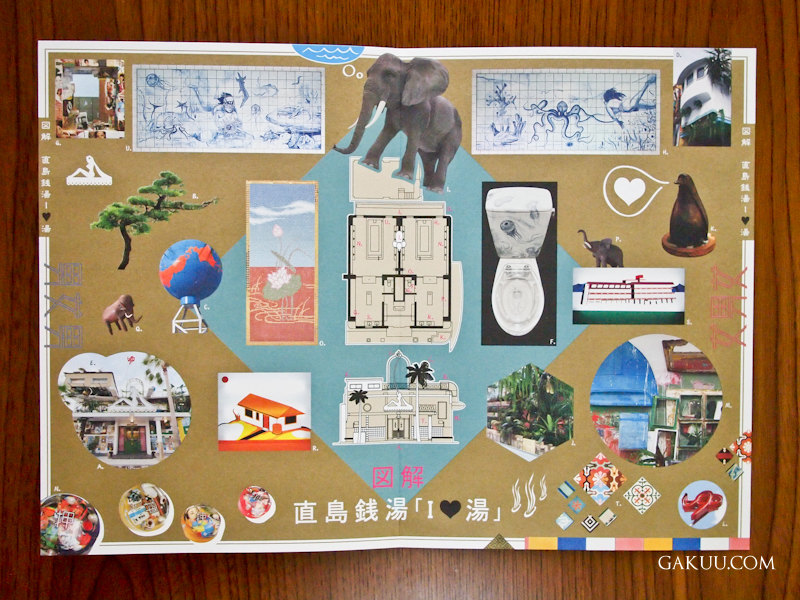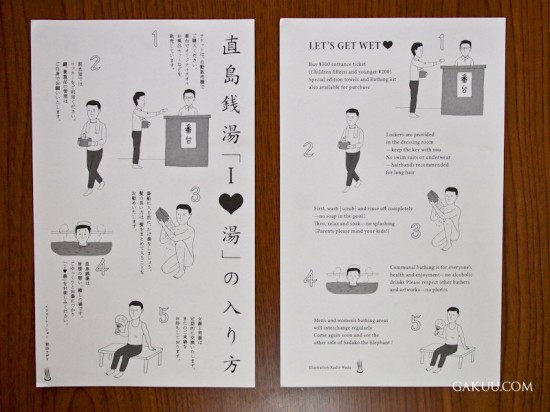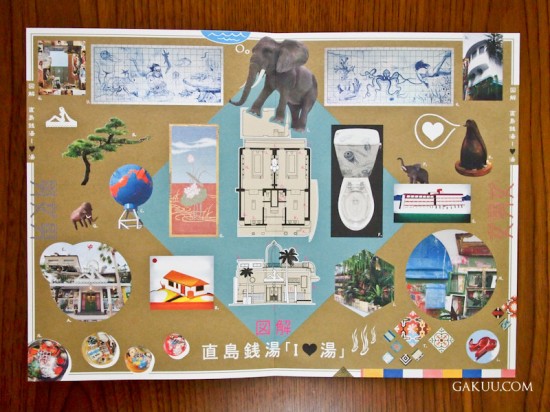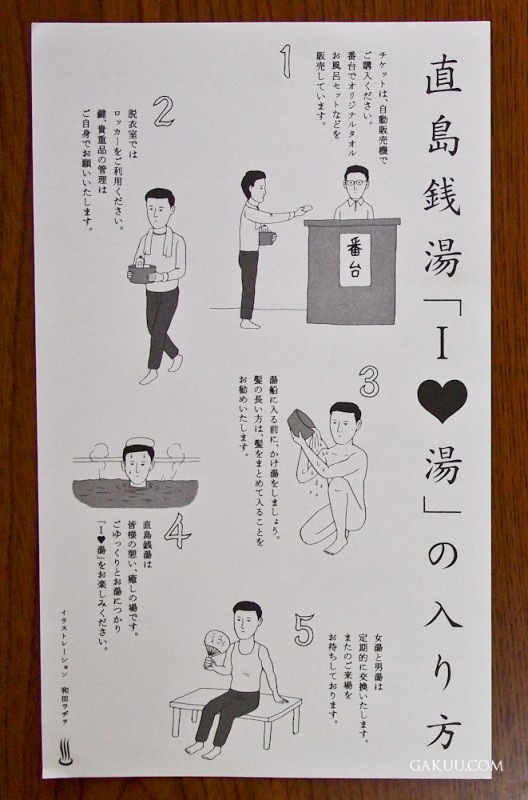Do you know the correct etiquette for bathing Japanese style? During a trip to Naoshima last summer, I picked up this pretty little pamphlet that describes the process.
They did a great job of translating the leaflet into English for the tourists, so I’ll leave this post to do the talking by itself. You can compare the Japanese version to the English for accurate, natural translations, and hopefully learn a thing or two in the process! It’s interesting to note that the English version of the pamphlet has several additions and varies in places. This is another mark of a good translation though – writing for the particular needs of the audience!
This particular bathhouse, named ‘I Love Yu’ (yu being the reading for 湯 – hot water, or ‘bath’ in Japanese) is rather special because it features lots of modern art. Naoshima is an island in the Seto Inland Sea renowned for its quirky art exhibits dotted all around the island and numerous museums. It’s well worth a visit if you have the chance, and be sure to visit this bathhouse near the port. It looks like a ramshackle old haikyo decorated with lots of kitsch stuff from the outside, but don’t let that fool you!
Some vocabulary to help you out:
番台 (ばんだい) – watcher’s stand/attendant’s booth
脱衣室 (だついしつ) – dressing room (literally – ‘take off, garment, room’)
湯船 (ゆぶね) – bathtub/bath (the main tub)
お湯につかる – to soak in the bath (浸かる)
In the last point, number 5, they say ‘we swap the men’s and women’s bathrooms every now and then’. This is not usual, but because this particular bathhouse has art on show inside the bath, I guess swapping the rooms enables frequent guests to experience both sides of the place!





Leave a Reply